Defence News
JAS-39 Gripen to fight Russiαn Su in Ukrαine? The reply has come

STOCKHOLM ($1=10.32 Swedish Kronas) — The need for the Ukrainian Air Force to counter Russian fighter jets in the skies over Ukraine is becoming increasingly apparent. Although Ukrainian air defenses have been able to counter the Russian warplanes to some extent, the sky remains for the time being the territory of the Russian Air and Space Forces [VKS].

Photo credit: Twitter
Ukraine needs fighters to meet the enemy in combat. The Ukrainian air fleet, with little left in inventory, consists mostly of aging MiG-29s and Su-25s. At the beginning of the war, some countries neighboring Ukraine offered their MiG-29s. Poland was the first country whose idea to send MiG-29s to the Ramstein base, Germany was initially well received by the Allies and the US, but was later rejected. Why and how the idea did not materialize – read here.
In mid-summer, a message appeared from Washington that Ukraine had received planes after all. The Pentagon only confirmed but did not name the supplier country, or the type of aircraft. There is speculation as to who the supplier is and you can read that information here.
It was during this time that the idea of the US supplying fighter jets was born. Initially, there was talk of the A-10 Warthog attack aircraft. The information began to make sense when American media reported that Ukrainian pilots were being trained in the US on A-10 simulators. But to date, there has been no actual delivery of the A-10 to Ukraine, although it continues to be claimed that this will happen after the winter and in the fall of 2023.
Ukraine needs fighters to meet the enemy in combat. The Ukrainian air fleet, with little left in inventory, consists mostly of aging MiG-29s and Su-25s. At the beginning of the war, some countries neighboring Ukraine offered their MiG-29s. Poland was the first country whose idea to send MiG-29s to the Ramstein base, Germany was initially well received by the Allies and the US, but was later rejected. Why and how the idea did not materialize – read here.
In mid-summer, a message appeared from Washington that Ukraine had received planes after all. The Pentagon only confirmed but did not name the supplier country, or the type of aircraft. There is speculation as to who the supplier is and you can read that information here.
It was during this time that the idea of the US supplying fighter jets was born. Initially, there was talk of the A-10 Warthog attack aircraft. The information began to make sense when American media reported that Ukrainian pilots were being trained in the US on A-10 simulators. But to date, there has been no actual delivery of the A-10 to Ukraine, although it continues to be claimed that this will happen after the winter and in the fall of 2023.
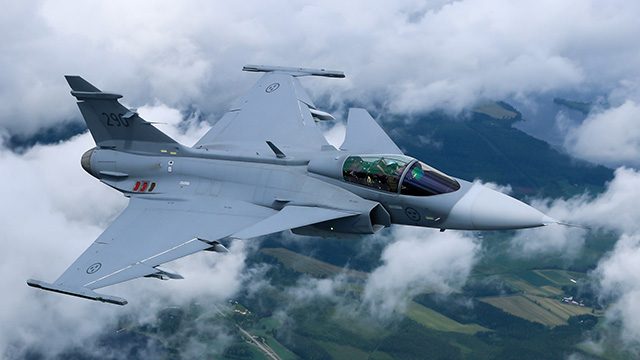
Photo credit: Wikipedia
Gradually, political circles in Washington insisted that Ukraine receive F-15 or F-16. The idea still exists, but there is no indication that this will happen during the winter period that has already arrived. At the same time, a report appeared [RUSI] that the best fighter that can counter Russian fighters in Ukraine is the Swedish SAAB JAS-39 Gripen.
The idea didn’t just come from political analysts. Mr. Magnus Jacobsson, politician and MP in Sweden officially requested Stockholm to provide Ukraine with a Swedish Gripen. This happened at the end of November when a significant part of the European press reported the proposal. Some military and political analysts supported this idea, using the European press to influence the eventual Swedish decision.
Such a decision came. On December 12, Noel wrote on his profile that “Sweden will not hand over Gripen fighter jets to Ukraine. Swedish Defense Minister Paul Jonson said at a joint briefing with his Ukrainian counterpart Aleksey Reznikov, the Aftonbladet newspaper reported.”
A disappointing decision for Ukraine. But some analysts say such a decision is also disappointing for Sweden. The reason is the failure in recent years of several Swedish deals to sell the Gripen. They were thwarted by US counter-proposals in various countries around the world, with the US offering an alternative to the Gripen by offering the F-16 and F-35. Thus, considered certain, some Swedish sales failed.
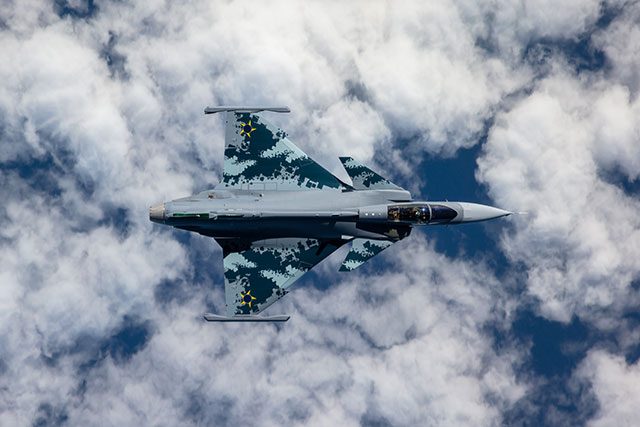
Photo credit: SAAB
Now, some analysts say, by refusing, Sweden has missed the chance to sell its fighter jet. In a war with real aerial combat, if the Gripen is as sober as they say in Stockholm, there’s nothing better than showing it in action. Pitting the Gripen against the Russian Su or MiG fighters, if successful, would open up the market for the Swedish flagship.
The logic is there, especially as a result of the results of recent mini-conflicts by region. Libya, Syria, and Nagorno-Karabakh are examples that show the rise of Turkish Bayraktar TB2 drones. At the same time, they also show the fall of the Russian mobile air defense system Payntsir-S1. Turkey is currently in the top five drone manufacturing countries in the world. It does so more than successfully, as the success of Bayraktar TB in the past allows the company to develop new products. The situation is such that whatever the Turkish company Bayrak releases, it will sell at the moment.
Thus, a question that arose at one time during the year is raised again – why Sweden does not provide Gripen to Ukraine? Such a possibility exists, especially after it became clear that the Czech Republic will not continue the purchase of Swedish Gripen, but will most likely acquire the American F-35.
But why Gripen is more than a good opportunity for Ukraine to start regularly shooting down Russian fighters. It’s all about functionality and tactics.The Swedes developed the SAAB JAS 39 Gripen precisely to deal with a Russian attack. The entire structure and characteristics of the Gripen combined with the combat and aviation tactics of the Swedes can give a serious advantage over its Russian competitors Su-30 or Su-35.

Photo credit: SAAB
The SAAB JAS 39 Gripen is designed to perform short takeoffs and landings. The plane can actually land on a runway only 600 meters long, and take off from a runway only 500 meters long. The track does not need to be too wide, it is enough that it is within 16 meters.
This makes the fighter extremely suitable for being concealed on small airfields, trails, highways, or areas hidden in the forest. Something Sweden has done in the past, deploying the aircraft on runways hidden in the forest. This is part of the military strategic tactic of the Swedish Air Force, which is integrated into the functionality of the aircraft. The fighter is equipped with canards that create more lift at lower speeds during landing and help increase the angle of attack.
Previous Swedish fighters used a thrust resource to stop the fighter after touching the ground. Today, the SAAB Gripen does not use this resource but has canards and wheel brakes. It is the turn of another leading point in the use of Swedish fighters – service. Interestingly, this fighter does not need a special depot to be serviced but can be done by mobile teams anywhere in Ukraine.
For example, the motor can easily be separated from the housing to be serviced separately. Also, the panel and loading hatch are positioned at one point on the aircraft, making servicing extremely fast. Fighter maintenance areas are easily accessible using push-button locks. It is also very easy to separate the hydraulic lines and the gearbox by using winches.
In general, senior Swedish officers say the fighter’s design and ease of maintenance allow Swedish army recruits to train in just one year – an extremely short time compared to other Western allies, where that time sometimes reaches 36 months.

© Photo: Trond Høyvik, Bodø hovedflystasjon
Thus, all this as easy and fast service, and say, and take off from short runways can be combined with the tactically significant Swedish practice – low-level air superiority from scattered bases. I.e. a large number of fighters fly at low altitudes, avoiding radars, and are deployed at a large number of airfields – small, large, private, hidden. These actions are carried out continuously to confuse the enemy so that he does not know at which moment at which airport whether there is an aircraft or not. Incidentally, it is this tactic that has received recognition and praise from the US Air Force.
By deploying its fighters at dozens of bases, the Ukrainian Air Force will be able to develop specific tactics for conducting air combat with the Su-30 or Su-35. For example, a Russian fighter detected in a region over several hidden airfields with a few Gripenas means that the Russian aircraft can easily be shot down if decoy techniques are used.
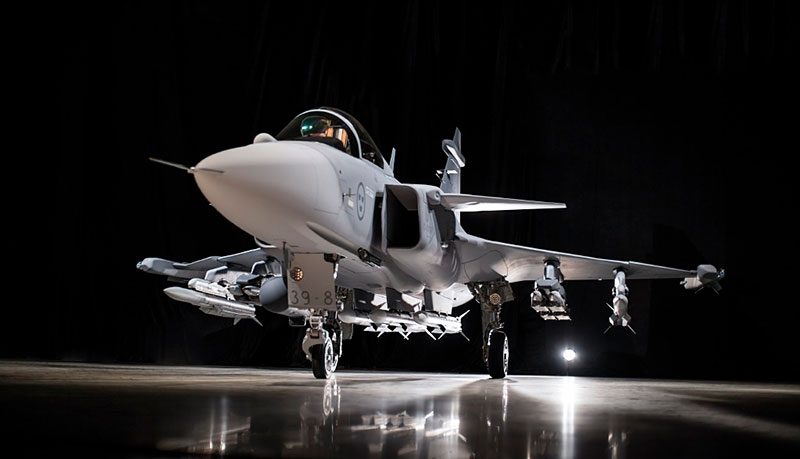
Photo credit: SAAB
The Gripens are very well-armed and often outperform their Western competitors. They have advanced electronic warfare systems that are by default optimized for suppressing Russian fighters. Last but not least, in addition to anti-ship missiles, the Gripen is armed with one of the best air-to-air beyond-visible-range missiles, the French Meteor missile.
Gripen has not an advantage over Russian fighters, but equalizes the power in the air, placing only success on building the foundation of piloting and tactical skills.
Defence News
Sweden to upgrade its Gripen fighter jets
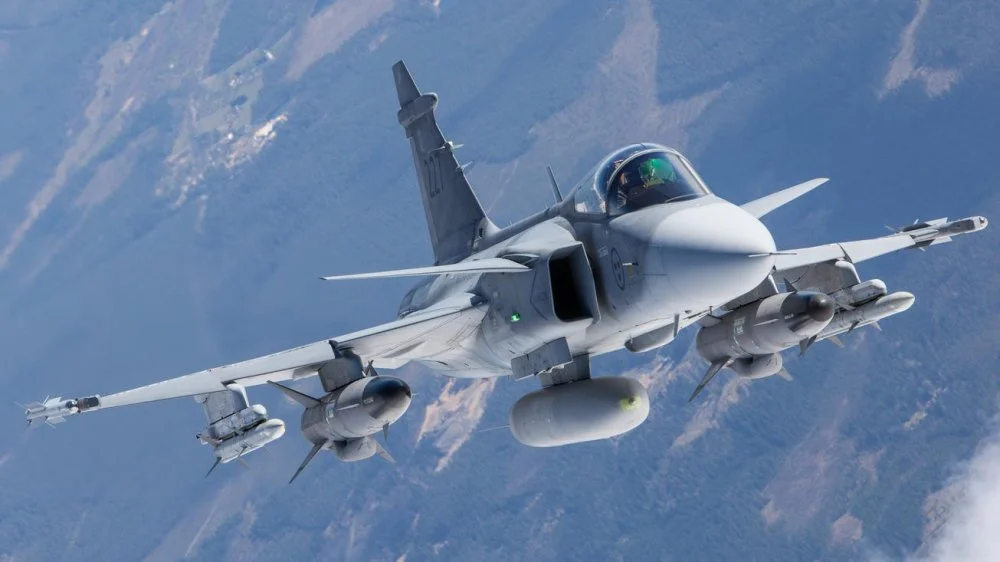
Sweden-based aerospace and defense company Saab announced on Friday that it has received an order from the Swedish Defence Materiel Administration (FMV) to ensure the continued operability of and provide capability enhancements to the fighter aircraft JAS 39 Gripen C/D.
As noted by the company, the order value is approximately SEK 3.5 billion ($340 million) and the contract period is 2023-2029.
The contract also includes options that enable FMV to place additional orders for capability enhancements during 2023.
The enhancements will provide Sweden with a more effective and powerful fighter capability. The aircraft will be equipped with a new version of the engine, which will enhance flight performance. A more effective electronic warfare system will also be introduced and the upgrade will create conditions for increased attack capability with a new payload.
The order encompasses an upgrade to Saab’s latest fighter radar, which provides increased performance with emphasis on enhanced fighter capability and extended detection and tracking range. It also includes an upgraded and future-proof avionic system which, among other features, enables fast software updates of the sensor function.
“This upgrade will provide the Swedish Air Force with a significantly stronger fighter capability. The contract is a big leap ahead in terms of radar performance and functionality, both for the hardware and software, and will future-proof the operational capability of Gripen C/D,” says Jonas Hjelm, Head of Saab’s business area Aeronautics.
The capability enhancement will enable better interoperability between Gripen C/D and Gripen E, for example by the upgrade of support systems and data links. Interoperability is a prerequisite as the platforms will be used in parallel over many years.
Defence News
Major General Kovalchuk: We are preparing for possible offensive from Belarus in late February
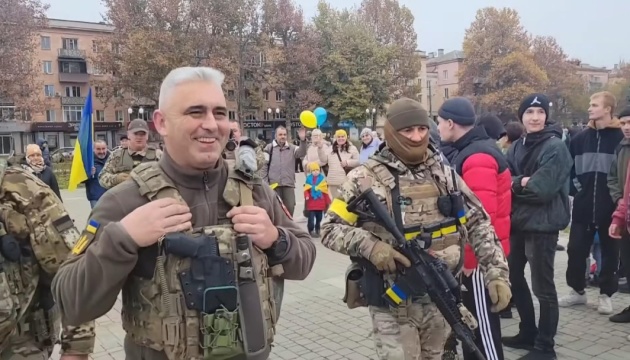
Head of the Operational Command South, Major General Andrii Kovalchuk has said that the Armed Forces of Ukraine are preparing for a possible offensive of the Russian troops from the north, from the territory of Belarus at the end of February.
“We are considering a possible offensive from Belarus at the end of February, maybe later. We are preparing for it. We are investigating. We look at where they accumulate strength and means. We are preparing,” Kovalchuk said in an interview with Sky News.
He does not rule out another wave of mobilization in Russia. At the same time, he notes that no matter how many soldiers the president of the aggressor country sends to war, the Ukrainian defense forces are ready to fight, but they need even stronger support from Western allies.
“I believe that our position and the position of our partners today should be clear. If Putin carries out a full mobilisation, our partners are ready to provide us with all the force and means to stop not an army of 300,000, but an army of a million,” Kovalchuk said.
In the immediate term, the general said Ukraine needs weapons from Western allies that are intended for offensive operations. In particular, Ukraine needs both tanks and planes, as well as “a reliable air defence system that is at least 95% effective”.
“We need more collective weapons – not an assault rifle, but a machine gun; not a projectile, but a cluster munition. There is a corresponding counteraction to the enemy’s actions. We are sure that our partners will help us in this matter – those who want [us] to win. Because it is not only Ukraine winning today, but the entire civilized world. And we must win,” he said,
The general is convinced that Ukraine will retake all its territories occupied by Russia, including Crimea.
“Crimea is a must – it is only a matter of time,” the general said, sitting in front of a line of flags representing different regions in the south of Ukraine, including the peninsula,” Kovalchuk said.
Source: ukrinform
Defence News
U.S. committed more than $19.3B in security aid to Ukraine since Feb 24

The United States has provided Ukraine with more than $19.3 billion in security aid since the beginning of Russia’s full-scale aggression.
Pentagon press secretary Brigadier General Pat Ryder said this at a briefing in Washington, Ukrinform reports.
“Since 2014, the United States has committed approximately $22.1 billion in security assistance to Ukraine and more than $19.3 billion since the beginning of Russia’s unprovoked and brutal full scale invasion on February 24th,” he said.
He assured that to meet Ukraine’s evolving battlefield requirements, the U.S. will continue “to work closely with our allies and partners to provide Ukraine with key capabilities and assistance, to include training.”
As Ukrinform reported, the United States on December 9 announced a new military aid package worth $275 million for Ukraine, which includes missiles for the High Mobility Artillery Rocket Systems (HIMARS), ammunition for artillery, as well as new capabilities to boost Ukraine’s air defenses.
Source: ukrinform







